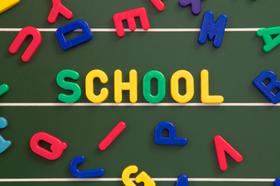Top Rankings
Douglas School District 51-1 ranks among the top 20% of public school district in South Dakota for:
Category
Attribute
Graduation Rate
Highest graduation rate (Top 10%)
Diversity
Most diverse schools (Top 1%)
Community Size
Largest student body (number of students) (Top 1%)
For the 2025 school year, there are 3 public elementary schools serving 2,001 students in Douglas School District 51-1. This district's average elementary testing ranking is 5/10, which is in the bottom 50% of public elementary schools in South Dakota.
Public Elementary Schools in Douglas School District 51-1 have an average math proficiency score of 37% (versus the South Dakota public elementary school average of 43%), and reading proficiency score of 50% (versus the 49% statewide average).
Minority enrollment is 36% of the student body (majority Hispanic), which is equal to the South Dakota public elementary school average of 36% (majority American Indian).
Overview
This School District
This State (SD)
# Schools
5 Schools
497 Schools
# Students
2,753 Students
101,009 Students
# Teachers
177 Teachers
7,507 Teachers
Student : Teacher Ratio
16:1
16:1
Student By Grade
District Rank
Douglas School District 51-1, which is ranked within the bottom 50% of all 146 school districts in South Dakota (based off of combined math and reading proficiency testing data) for the 2022-2023 school year.
The school district's graduation rate of 87% has decreased from 90-94% over five school years.
Overall District Rank
#95 out of 148 school districts
(Bottom 50%)
(Bottom 50%)
Math Test Scores (% Proficient)
38%
42%
Reading/Language Arts Test Scores (% Proficient)
51%
51%
Science Test Scores (% Proficient)
41%
42%
Graduation Rate
87%
82%
Students by Ethnicity:
Diversity Score
0.53
0.55
% American Indian
8%
17%
% Asian
1%
2%
% Hispanic
11%
8%
% Black
2%
3%
% White
66%
64%
% Hawaiian
n/a
n/a
% Two or more races
12%
6%
All Ethnic Groups
District Revenue and Spending
The revenue/student of $12,308 in this school district is less than the state median of $13,121. The school district revenue/student has stayed relatively flat over four school years.
The school district's spending/student of $10,736 is less than the state median of $12,623. The school district spending/student has stayed relatively flat over four school years.
Total Revenue
$34 MM
$1,916 MM
Spending
$30 MM
$1,844 MM
Revenue / Student
$12,308
$13,121
Spending / Student
$10,736
$12,623
Best Douglas School District 51-1 Public Elementary Schools (2025)
School
(Math and Reading Proficiency)
(Math and Reading Proficiency)
Location
Grades
Students
Rank: #11.
Patriot Elementary -06
(Math: 56% | Reading: 57%)
Rank:
Rank:
9/
Top 20%10
421 Don Williams Dr
Box Elder, SD 57719
(605) 923-0080
Box Elder, SD 57719
(605) 923-0080
Grades: K-3
| 936 students
Rank: #22.
Vandenberg Elementary - 02
(Math: 42% | Reading: 50%)
Rank:
Rank:
4/
Bottom 50%10
561 Briggs St
Box Elder, SD 57719
(605) 923-0060
Box Elder, SD 57719
(605) 923-0060
Grades: 4-5
| 442 students
Rank: #33.
Douglas Middle School - 01
(Math: 28% | Reading: 48%)
Rank:
Rank:
3/
Bottom 50%10
691 Tower Rd
Box Elder, SD 57719
(605) 923-0050
Box Elder, SD 57719
(605) 923-0050
Grades: 6-8
| 623 students
Recent Articles

The 15 Biggest Failures of the American Public Education System
The world is in a constant state of change and those who fail to adjust fall behind. Unfortunately, the American public education system has not kept up with the times and is currently facing a number of serious problems. Keep reading to learn about the biggest failures affecting the modern U.S. public education system as well as some of the trends that could spark change.

Florida Governor Calls for More Funding for State鈥檚 Public School System
Florida Governor Rick Scott has introduced a state budget for next year that pumps one billion more dollars into the public school system. We鈥檒l look at his reasons for the increase and the responses to the proposal.

Can Your Child鈥檚 School Meet the National Standards?
The article discusses the challenges public schools face in meeting national educational standards. It examines current performance trends, identifies key issues affecting student achievement, and explores potential solutions for improving academic outcomes across U.S. public schools.




